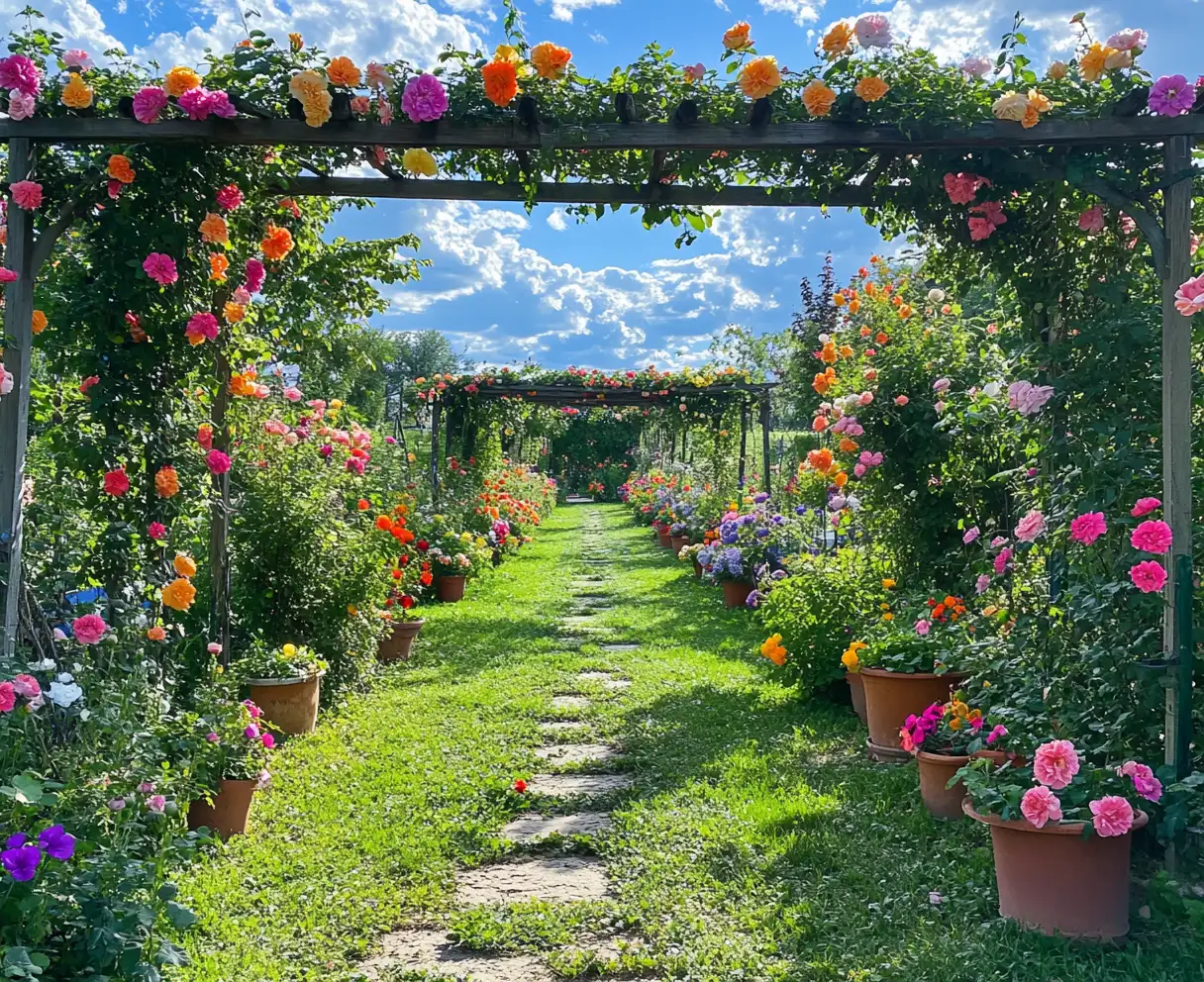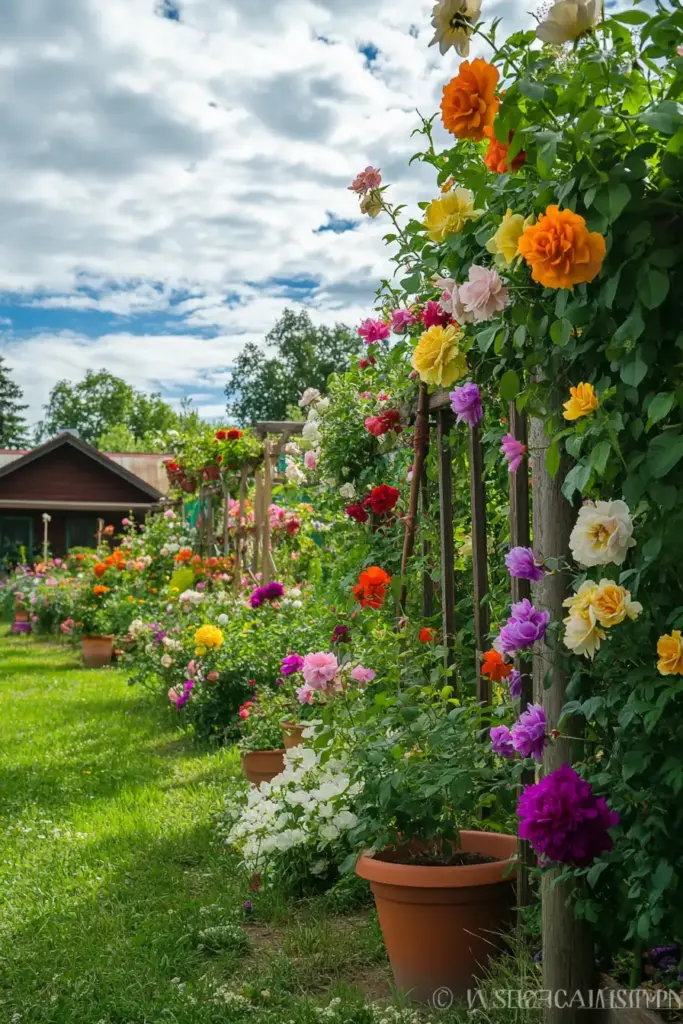Trellis for climbing roses is an essential feature if you’re looking to transform your garden into a romantic, blooming haven. But let’s be honest—most gardeners don’t have the time or budget for intricate metalwork or ornate wooden structures. Fortunately, there are plenty of clever DIY trellis ideas that are both affordable and effective.
Whether you’re new to gardening or simply need a temporary fix while you plan for a long-term setup, one of the best solutions is a bamboo trellis. It’s fast, budget-friendly, and blends naturally into your space. In this guide, you’ll learn how to build a DIY rose trellis in under five minutes using just a few basic materials—ideal for renters, beginners, or anyone looking to shape their climbing rose display without spending a fortune.
Let’s dive in and give your roses the stylish support they need to thrive!
Table of Contents
🌱 Why Climbing Roses Need a Trellis
Climbing roses may look wild and untamed when left to grow on their own, but give them a proper trellis and they’ll reward you with a breathtaking vertical display of blooms. A trellis for climbing roses isn’t just about visual appeal—it’s a practical gardening essential that improves plant health, bloom output, and overall manageability.
Benefits of Using a Trellis for Climbing Roses:
- Boosts Flower Production: Climbing roses don’t naturally climb like vines—they need help. When their long canes are bent or trained horizontally at about a 45° angle, the plant responds by pushing out more lateral shoots. These side shoots are where the flowers form, resulting in more blossoms.
- Encourages Healthy Growth: Supporting the canes keeps them off the ground, improving air circulation and reducing the risk of disease or pests, especially in damp climates.
- Adds Vertical Interest: A well-placed trellis turns your climbing rose into a living sculpture. It adds height, shape, and structure to garden beds, patios, or fences—making the most of your space.
- Keeps the Plant Manageable: Left untrained, climbing roses can sprawl unpredictably. A trellis lets you shape the plant to your liking, making pruning and maintenance much easier.
By training your rose canes with intention, you’re not just creating order—you’re encouraging the plant to do what it does best: bloom beautifully and often.
🪴 Common Trellis Options for Roses
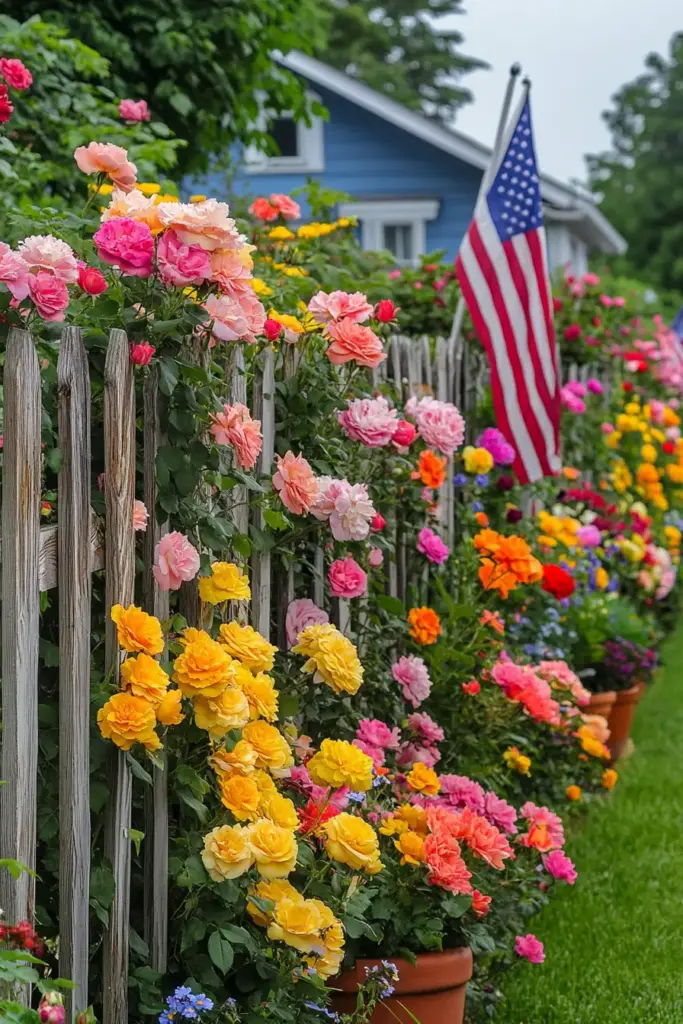
When choosing a trellis for climbing roses, it’s easy to get overwhelmed by the options. From ornate iron structures to rustic garden arches, the market is full of choices—but not all of them are practical, especially if you’re short on time or working with a tight budget.
Let’s take a quick look at the most common trellis types, including the one we’ll be focusing on: bamboo sticks.
Popular Trellis Styles for Climbing Roses:
🪵 Traditional Wood or Metal Trellises
- Pros: Long-lasting, decorative, and sturdy.
- Cons: Can be expensive and may require installation tools or anchoring.
🏛️ Arches & Gazebos
- Pros: Provide dramatic vertical impact and can become garden centerpieces.
- Cons: Require significant space and often come with a higher price tag.
🧱 Lattice Panels
- Pros: Ideal for training roses along fences or walls. Blend well with existing structures.
- Cons: May need to be anchored into wood or masonry for stability.
🍅 Tomato Cages
- Pros: Surprisingly useful for small or container-grown roses.
- Cons: Limited in height and not suitable for vigorous rose varieties.
🎍 Bamboo Sticks (Our DIY Focus!)
- Pros: Affordable, eco-friendly, easy to install, and perfect for early-stage training.
- Cons: Not a permanent solution, but excellent for 1–3 years of support.
While all of these options have their place in rose gardening, bamboo sticks stand out for their simplicity and accessibility. Especially if you’re just getting started or need a quick fix, they’re the best entry point into the world of vertical rose training.
🎍 Why Bamboo Sticks Are Great
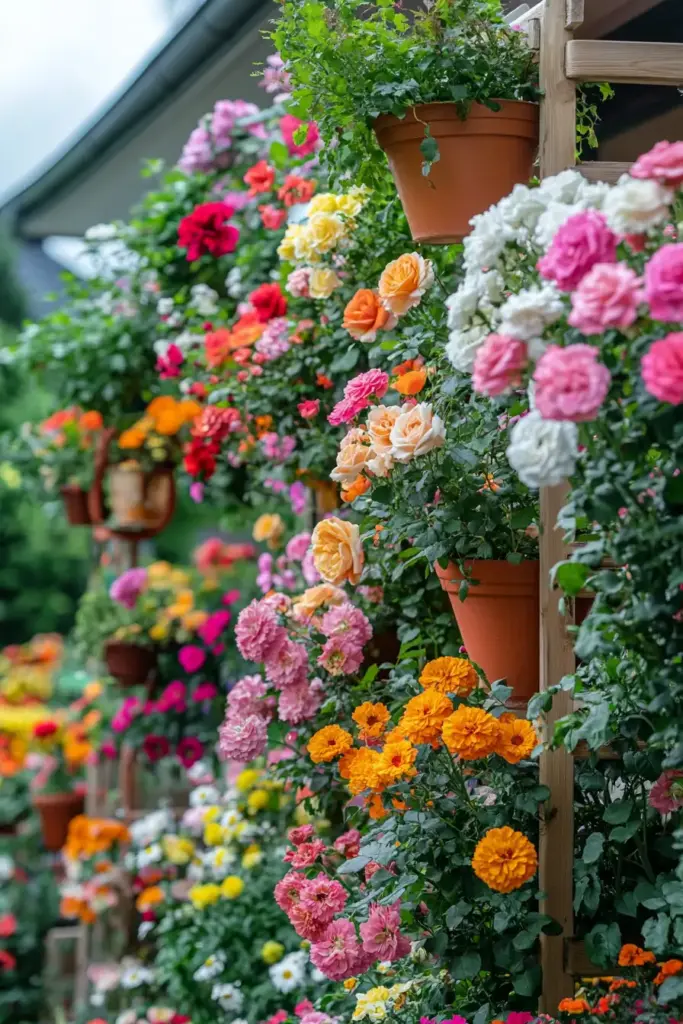
If you’re looking for a trellis for climbing roses that’s cheap, quick, and surprisingly effective, bamboo sticks check all the boxes. While they may not have the grandeur of wrought iron or the permanence of cedarwood, bamboo trellises offer something every gardener values: simplicity and practicality.
Here’s why bamboo sticks are the ideal solution for beginner gardeners or those working with young climbing roses.
🌿 Benefits of Using Bamboo for a Trellis
- Lightweight & Easy to Handle: Unlike heavy metal or wooden trellises, bamboo is incredibly easy to move and adjust as your plant grows.
- Biodegradable & Eco-Friendly: Bamboo is a renewable resource, making it a great choice for sustainable gardening.
- Natural Aesthetic: Bamboo blends seamlessly with garden foliage, keeping the focus on your roses rather than the support.
- Easy to Install: No tools, no digging, no drilling—just push the sticks into the soil and tie them together.
- Perfect for Temporary Use: Bamboo sticks typically last 1–3 years, giving your rose enough time to establish itself before transitioning to a more permanent support.
💡 Gardener’s Tip: Bamboo is especially useful during the early training phase, when shaping new canes is crucial. Once your rose is mature and well-trained, you can easily upgrade to a decorative structure if desired.
Bamboo makes training climbing roses approachable, even for first-timers. It’s gardening made easy—and that’s exactly what a fast, budget-friendly DIY should be.
🧰 Materials List for DIY Bamboo Trellis
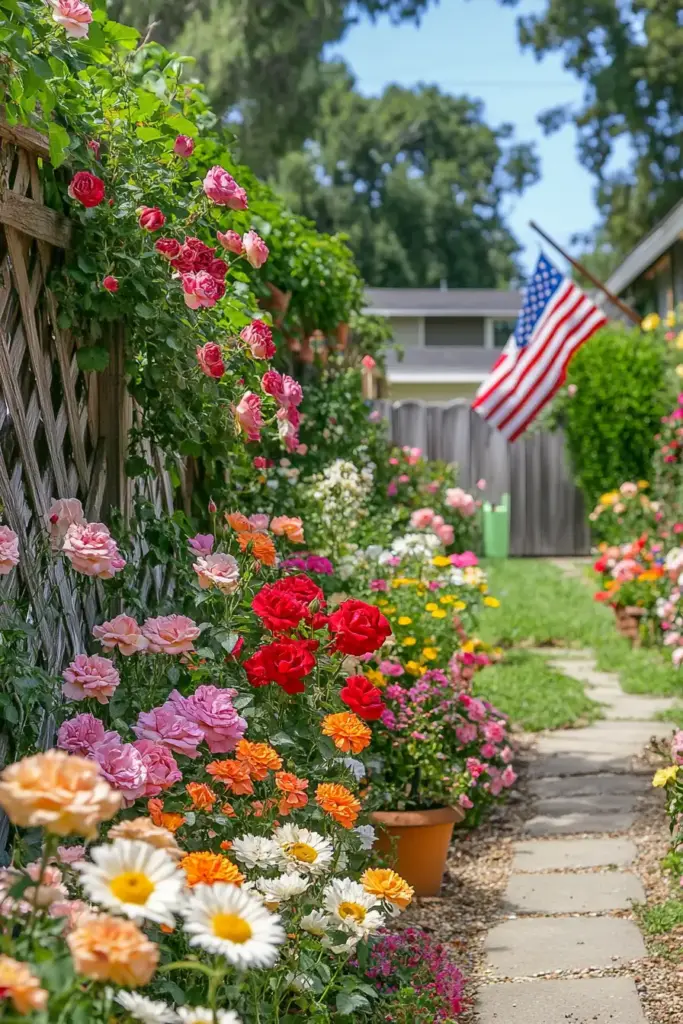
Creating a functional and attractive trellis for climbing roses doesn’t require a trip to the hardware store or a full afternoon of work. In fact, with just a few simple, low-cost materials—most of which you may already have—you can build a reliable bamboo trellis in minutes.
Here’s what you’ll need to get started:
🛒 Basic Materials
- 2–3 bamboo sticks (4 to 5 feet tall)
Ideal height depends on your rose variety, but aim for sturdy sticks that can support upward growth without wobbling. - Garden twine or jute string
Choose a natural fiber that’s gentle on plant stems and strong enough to hold ties in place. Avoid plastic ties or wires that can cut into canes. - Garden shears or scissors
You’ll need these to trim the twine or prune stray canes as you shape your plant.
🧤 Optional But Helpful
- Gloves
Protect your hands from thorns, especially when handling mature or woody canes. - Mallet or hammer
Useful if the soil is compacted or rocky—helps drive bamboo into the ground securely without splintering.
🌱 Bonus Tip: Most of these materials are reusable or biodegradable, making this setup not only cost-effective but environmentally friendly too.
With your toolkit in hand, you’re ready to assemble a simple but effective trellis that will support your roses beautifully through their growing season.
🛠️ Step-by-Step Instructions
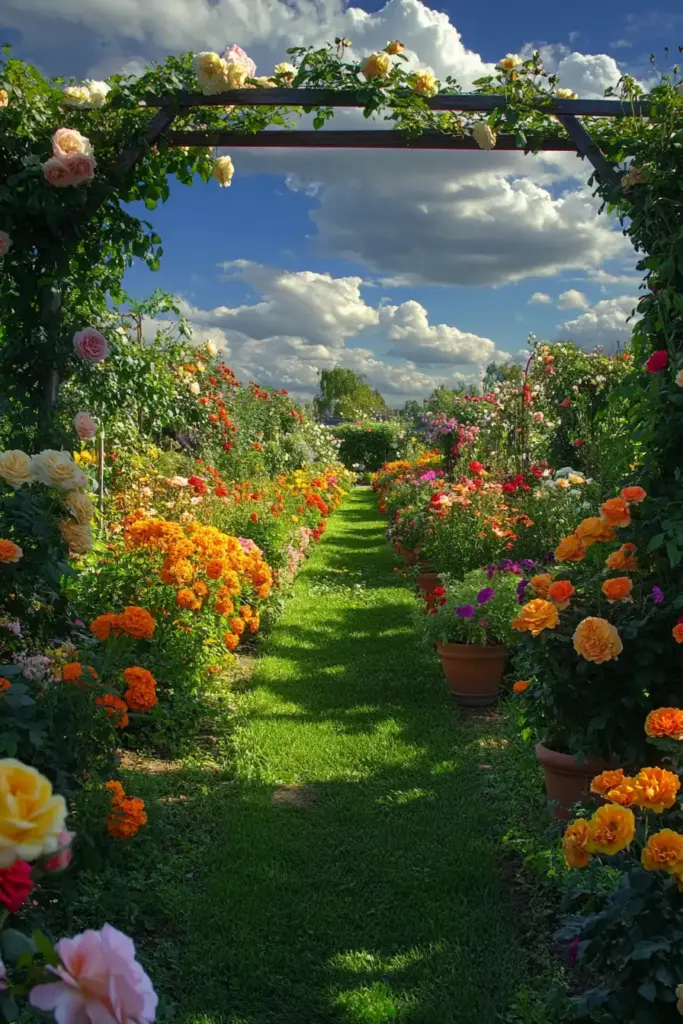
Now that you’ve got your materials ready, it’s time to put them to use! This DIY bamboo trellis for climbing roses takes less than five minutes to set up, and it’s surprisingly sturdy for such a simple structure. Whether you’re working in a flower bed, raised planter, or even a large pot, this method works beautifully.
Here’s how to build and install your trellis:
1. Place the Bamboo Sticks
- Insert 2 to 3 bamboo sticks into the soil around the base of your climbing rose.
- Form a teepee or triangular shape—this gives structure while allowing airflow.
- Push each stick 4 to 6 inches deep for stability, or gently hammer if the soil is firm.
📌 Tip: Space the sticks evenly to create a symmetrical base for balanced support.
2. Tie the Tops Together
- Gather the tops of the bamboo sticks.
- Use twine or jute string to secure them tightly, wrapping several times before tying a firm knot.
- This step locks in your trellis shape and prevents wobbling in wind or rain.
💡 Optional: Create extra twine loops between the sticks at mid-height for additional tie points as your rose grows.
3. Train the Rose Canes
- Gently bend mature canes (thicker than a pencil) toward the bamboo structure.
- Position them at about a 45° angle—this encourages lateral growth and more blooms.
- Loosely tie each cane to a bamboo stick using soft twine. Avoid tight knots that could damage the stems.
- If some canes don’t reach yet, use longer twine pieces to “bridge” the gap and guide them in the right direction.
🌹 Rose Training Tip: Some canes are flexible enough to wrap gently around the bamboo, while others may need a more delicate touch. Be patient—forcing a stiff cane can cause breakage.
In just a few minutes, you’ve provided your climbing rose with the structure it needs to grow vertically, stay healthy, and bloom more abundantly—all while keeping your setup lightweight and affordable.
💡 Maintenance Tips
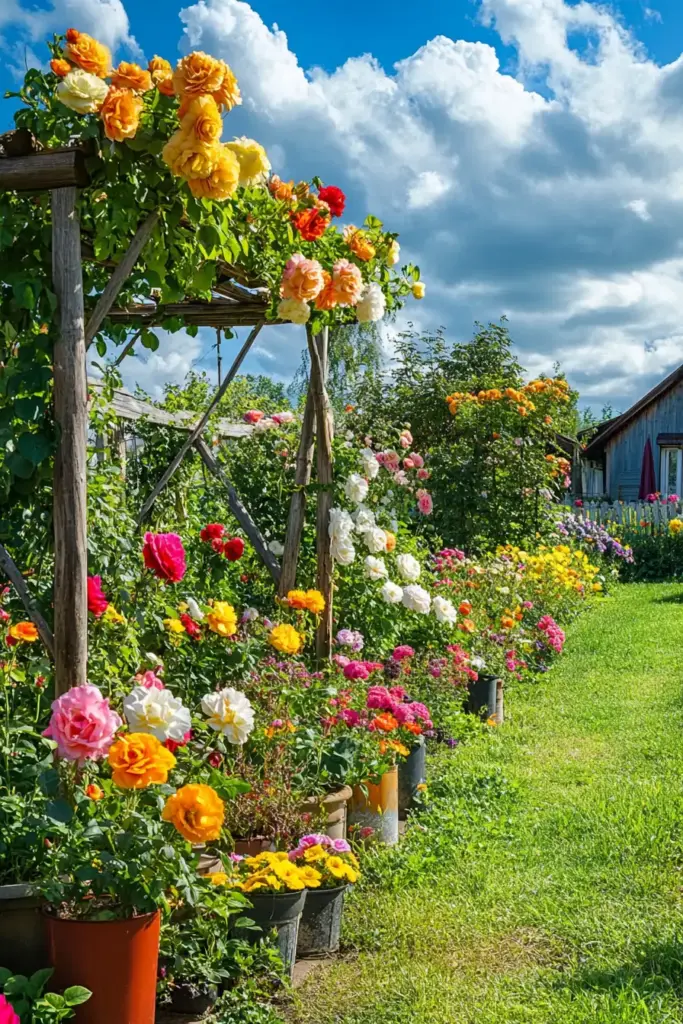
Setting up a trellis for climbing roses is just the beginning—keeping your roses healthy, tidy, and blooming beautifully requires a bit of ongoing care. Fortunately, maintaining your DIY bamboo trellis doesn’t take much time and goes a long way in helping your plant thrive.
Here’s how to make the most of your setup with simple, effective maintenance:
🔄 1. Check and Adjust Ties Regularly
- As your rose grows, inspect the twine ties every couple of weeks.
- Loosen or reposition them as needed to avoid constricting the stems.
- What fits in spring may become too tight by mid-summer.
🧵 Pro Tip: Use soft, flexible ties that stretch slightly with growth—this minimizes stem damage.
✂️ 2. Prune with Purpose
Regular pruning helps direct growth and keeps your rose healthy.
- Remove dead or diseased canes to prevent the spread of issues.
- Cut back any canes growing away from your desired shape.
- Deadhead spent blooms to encourage repeat flowering.
- Train new canes early by tying them in before they harden or grow out of reach.
🌿 Keeping the structure tidy not only improves appearance—it also improves airflow and reduces pests and disease.
💪 3. Reinforce During Bad Weather
Bamboo is strong, but storms can test any garden structure.
- After heavy winds or rain, check the stability of your trellis.
- Reinforce it with extra twine if it’s wobbly.
- Replace weakened or splintered bamboo sticks as needed.
🌀 Seasonal Tip: In winter or very wet climates, consider storing bamboo sticks indoors between seasons if your roses go dormant.
🌸 4. Encourage Lateral Growth for More Blooms
Don’t forget the golden rule of climbing roses: flowers grow on side shoots, not on the main vertical cane.
- Continue bending new long canes at a 45-degree angle as they emerge.
- Secure them gently to guide their shape and encourage flowering.
🌟 Every time you train a cane correctly, you’re increasing your chances for a fuller, more vibrant rose display.
With a little attention every few weeks, your bamboo trellis will remain strong and your climbing rose will keep blooming its heart out—season after season.
🧾 Conclusion
A well-supported climbing rose is a true showstopper in any garden—but that beauty doesn’t need to come with a hefty price tag or take an entire afternoon to achieve. With just a few bamboo sticks, some twine, and five spare minutes, you can create a DIY trellis for climbing roses that promotes healthier growth, more vibrant blooms, and a beautifully sculpted shape.
This simple, beginner-friendly method is perfect for:
- Gardeners on a budget – Looking for affordable trellis options
- Renters or temporary gardeners – Who need flexible, non-permanent solutions
- Rose lovers – Eager to start training their roses before investing in more elaborate structures
If you’re nurturing your first rose or guiding a young climber toward its full potential, this quick rose trellis guide gives your garden a strong, stunning start. And when you’re ready to explore more rose care ideas, check out our step-by-step guide to growing climbing roses to take your floral display to the next level. 🌹
❓ FAQ: Trellis for Climbing Roses
1. Do climbing roses need a trellis to grow?
Yes. While climbing roses can grow long canes on their own, they don’t naturally “cling” like vines. A trellis for climbing roses provides essential support, helping to shape the plant, improve airflow, and boost flower production.
2. What’s the best type of trellis for a beginner gardener?
A DIY bamboo trellis is the best beginner option. It’s inexpensive, easy to install in under 5 minutes, and gentle on young rose canes—perfect for temporary or short-term use.
3. How tall should a trellis be for climbing roses?
Aim for 4 to 6 feet in height for most rose varieties. Taller climbers or mature plants may eventually need support up to 8 feet or more, especially if you’re training them over an arch or pergola.
4. How do I attach climbing roses to a bamboo trellis?
Use soft garden twine or jute to loosely tie canes to the bamboo. Position the canes at a 45° angle to encourage lateral branching and more blooms. Never tie too tightly—leave space for the cane to grow.
5. Can I leave the bamboo trellis in year-round?
Yes, but note that bamboo is biodegradable and may start to break down after 1–3 years, especially in wet or windy climates. For long-term use, reinforce as needed or plan to upgrade to a more permanent trellis later.
6. What’s the difference between climbing and rambling roses?
Climbing roses bloom on current-season growth and benefit from training and pruning. Ramblers bloom once a year on last season’s wood and often grow larger, requiring more robust support.
🌿 Love gardening inspiration? Follow me on Pinterest for bold plant ideas, tips, and seasonal color!
More Posts
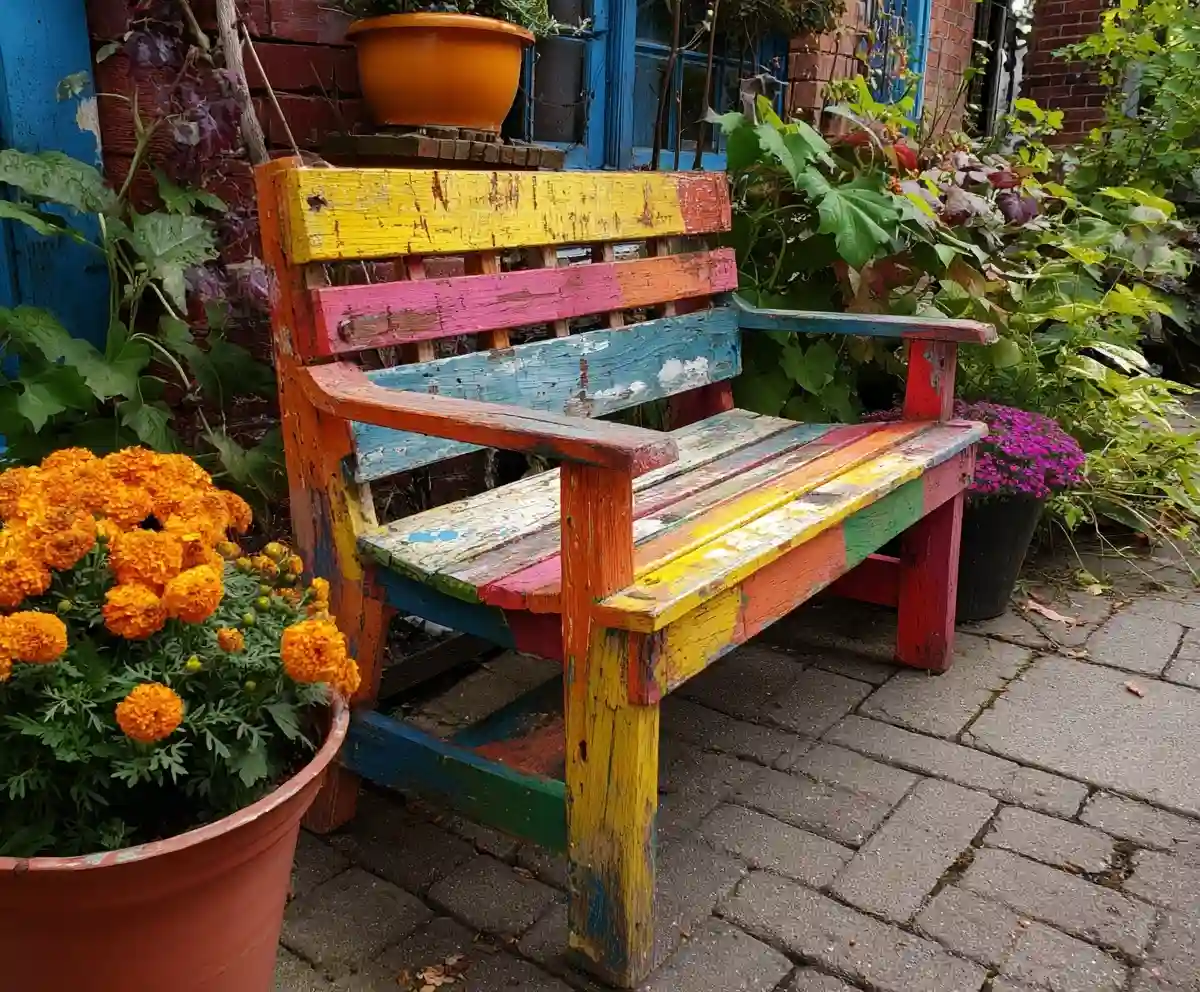
19+ Budget-Friendly Backyard Makeover Ideas
Backyard makeover ideas can turn even the most ordinary outdoor space into a warm, inviting retreat—without draining your wallet.
Read More →
21 Stunning & Simple DIY Clematis Trellis Designs
DIY clematis trellis designs are a beautiful way to blend creativity with function in your garden.
Read More →
12 Full Sun Perennials That Bloom All Summer
Explore a selection of hardy perennials that flourish and bloom beautifully in full sun throughout the summer.
Read More →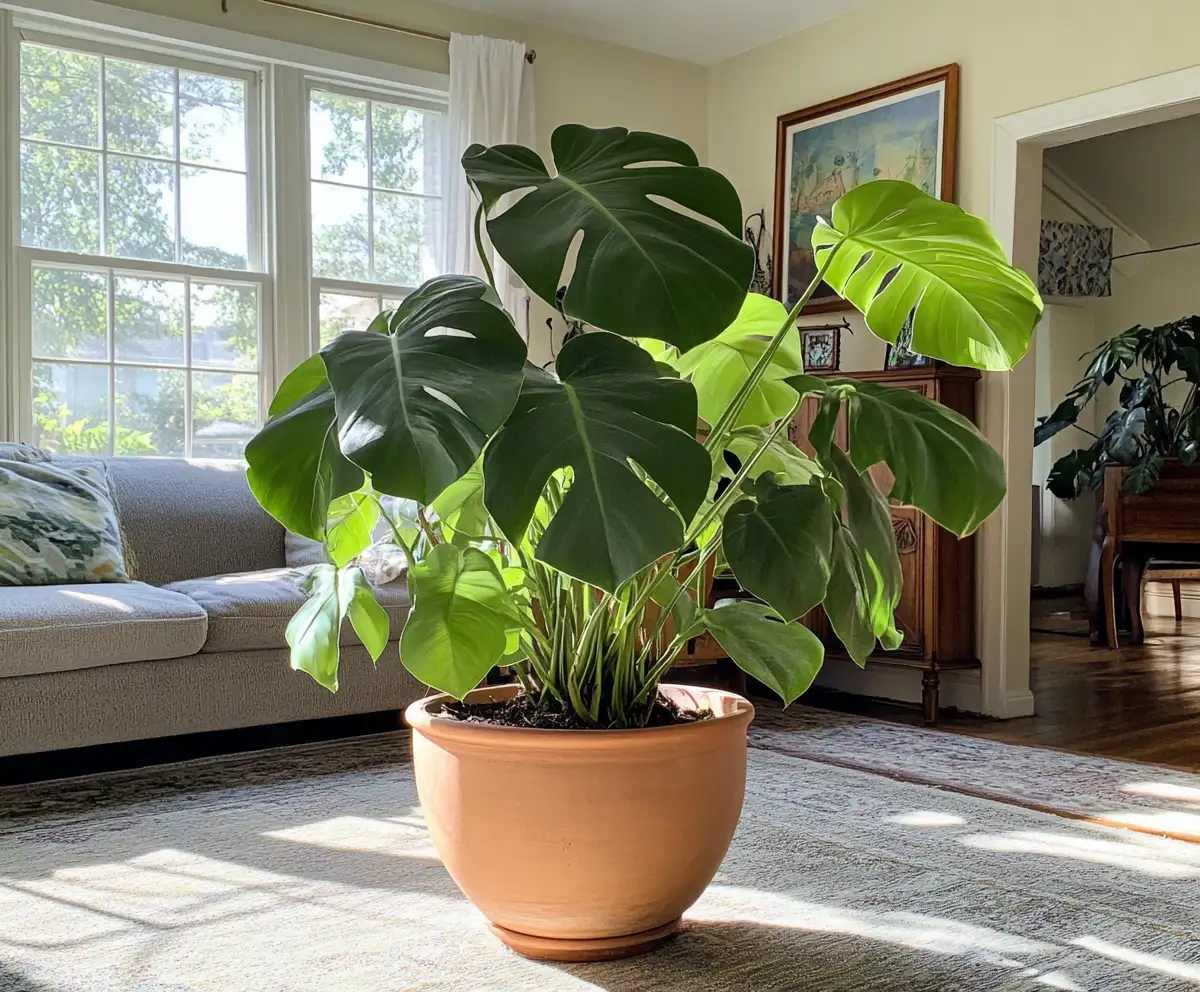
Houseplants for Living Room
Find the perfect houseplants to brighten and purify your living room while adding a touch of nature indoors.
Read More →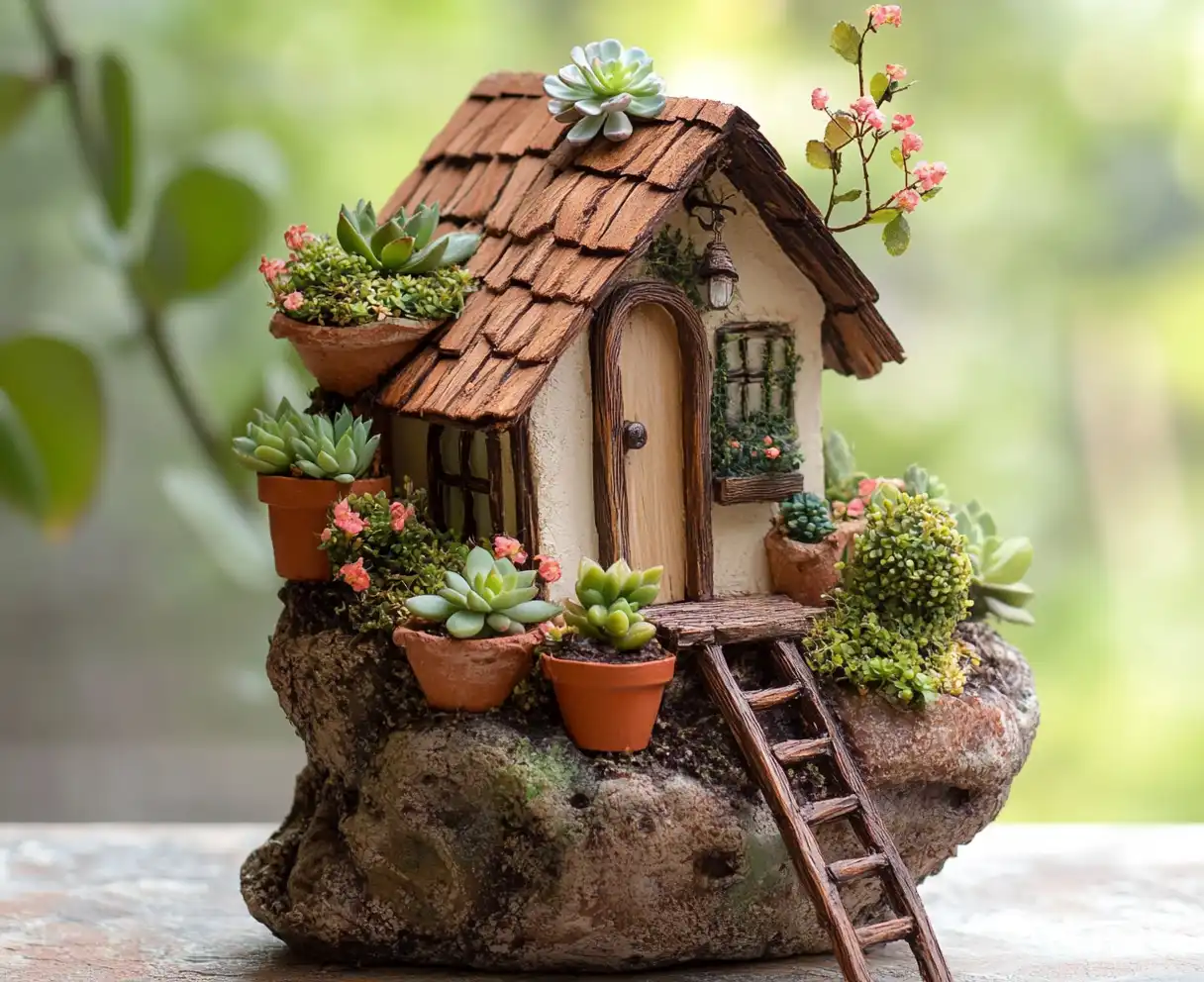
Backyard Play Area for Kids
Create a fun and safe backyard play area for kids with these inspiring design ideas and tips.
Read More →
Top Privacy Trees
Discover top tree varieties that provide natural privacy and enhance your outdoor space.
Read More →
